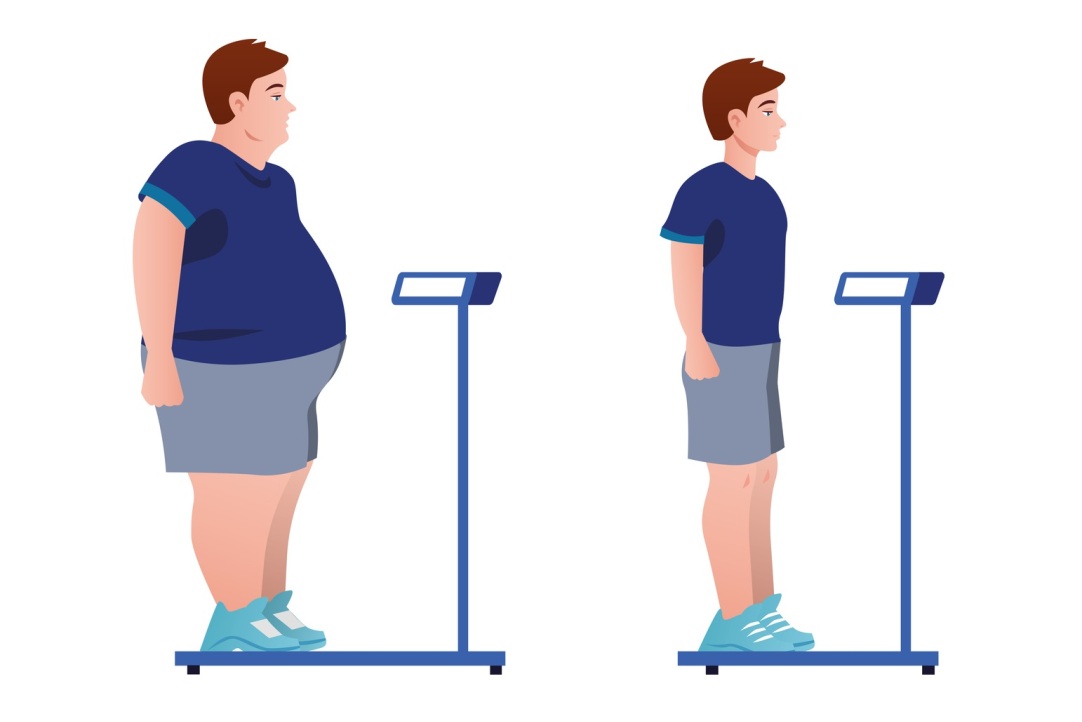Slim vs Fat: Overweight Russians Earn Less

Overweight Russians tend to earn significantly less than their slimmer counterparts, with a 10% increase in body mass index (BMI) associated with a 9% decrease in wages. These are the findings made by Anastasiia Deeva, lecturer at the HSE Faculty of Economic Sciences and intern researcher in Laboratory of Economic Research in Public Sector. The article has been published in Voprosy Statistiki.
In recent decades, the rising number of overweight individuals has become a serious public health concern. The World Health Organisation and governments around the world have voiced alarm over the increasing mortality rates and prevalence of chronic health conditions linked to this issue. Additionally, being overweight can negatively impact a person’s standing in the job market. Numerous studies indicate that in many countries, overweight individuals often face discrimination during the hiring process as well as in opportunities for career advancement. In the United States, a one-point increase in BMI is associated with a 3% to 6% reduction in income, while in Taiwan, the decrease can be as high as 7%. In Russia, overweight is also a pressing issue. Over the past five years, the proportion of overweight adults has risen to 62.5%. However, there have been no comprehensive studies examining the impact of being overweight on the wages of Russian employees.
Anastasiia Deeva, a visiting lecturer and doctoral student at the HSE Faculty of Economic Sciences, analysed data from the Russian Longitudinal Monitoring Survey conducted by HSE University (RLMS-HSE) for the period 2013 to 2022. This population-based survey enables researchers to track changes in the socioeconomic and demographic characteristics of the same individuals over time. The final sample of Deeva's study included data from 17,000 respondents. The average age of participants was 41, the average monthly salary was approximately 37,000 roubles, and the average BMI was 26.22—classified as slightly overweight.

Anastasiia Deeva
Body mass index has its limitations—for example, individuals with high muscle mass may be classified as overweight according to BMI. 'The BMI of a well-built athletic person may incorrectly suggest excess weight, but only if they have a very high muscle mass. However, this is much less common than actual overweight. Therefore, on average, BMI remains a useful measure for identifying the effects of being overweight,' Deeva comments.
BMI and wages can be subject to reverse causality: on one hand, overweight employees may face discrimination and earn less; on the other, employees with higher wages may be healthier and slimmer due to better nutrition and more frequent exercise. Deeva used a customised model that accounts for these caveats, enabling a more accurate assessment of BMI’s impact on wages.
The analysis revealed that in Russia, each one-point increase in BMI is associated with an average 4% decrease in monthly wages. This means that individuals with a normal BMI of up to 24 and those with a BMI of 34, classified as class I obesity, can have a wage difference of approximately 40%.
For a more convenient interpretation, the author constructed a second model that used the logarithms of BMI and wages in order to estimate the relative change in the indicators. She found that a 10% increase in BMI corresponds to an approximate 9% decrease in wages.

Additionally, the relationship between BMI and wages was found to be non-linear. An initial increase in BMI leads to a sharp decline in wages, but after reaching a certain threshold, the relationship weakens and wages decline more gradually.
This suggests a pattern of bodyweight-based discrimination in the Russian job market, where overweight individuals face fewer opportunities for high-paying positions, which in turn negatively affects their families’ well-being.
'It is important to recognise that discrimination against overweight employees is not truly about their appearance but rather stems from social stereotypes and misconceptions surrounding obesity. In modern society, it is commonly assumed that an overweight person is more likely to be lazy and unmotivated, which sends a signal to employers that such an employee may underperform. I believe this is the main reason behind lower earnings,' Deeva argues. 'However, every individual is unique, and appearance has no bearing on workplace performance. Therefore, relying on a one-size-fits-all, BMI-based approach to hiring is misguided.'
See also:
Larger Groups of Students Use AI More Effectively in Learning
Researchers at the Institute of Education and the Faculty of Economic Sciences at HSE University have studied what factors determine the success of student group projects when they are completed with the help of artificial intelligence (AI). Their findings suggest that, in addition to the knowledge level of the team members, the size of the group also plays a significant role—the larger it is, the more efficient the process becomes. The study was published in Innovations in Education and Teaching International.
New Models for Studying Diseases: From Petri Dishes to Organs-on-a-Chip
Biologists from HSE University, in collaboration with researchers from the Kulakov National Medical Research Centre for Obstetrics, Gynecology, and Perinatology, have used advanced microfluidic technologies to study preeclampsia—one of the most dangerous pregnancy complications, posing serious risks to the life and health of both mother and child. In a paper published in BioChip Journal, the researchers review modern cellular models—including advanced placenta-on-a-chip technologies—that offer deeper insights into the mechanisms of the disorder and support the development of effective treatments.
Using Two Cryptocurrencies Enhances Volatility Forecasting
Researchers from the HSE Faculty of Economic Sciences have found that Bitcoin price volatility can be effectively predicted using Ethereum, the second-most popular cryptocurrency. Incorporating Ethereum into a predictive model reduces the forecast error to 23%, outperforming neural networks and other complex algorithms. The article has been published in Applied Econometrics.
Administrative Staff Are Crucial to University Efficiency—But Only in Teaching-Oriented Institutions
An international team of researchers, including scholars from HSE University, has analysed how the number of non-academic staff affects a university’s performance. The study found that the outcome depends on the institution’s profile: in research universities, the share of administrative and support staff has no effect on efficiency, whereas in teaching-oriented universities, there is a positive correlation. The findings have been published in Applied Economics.
Physicists at HSE University Reveal How Vortices Behave in Two-Dimensional Turbulence
Researchers from the Landau Institute for Theoretical Physics of the Russian Academy of Sciences and the HSE University's Faculty of Physics have discovered how external forces affect the behaviour of turbulent flows. The scientists showed that even a small external torque can stabilise the system and extend the lifetime of large vortices. These findings may improve the accuracy of models of atmospheric and oceanic circulation. The paper has been published in Physics of Fluids.
Solvent Instead of Toxic Reagents: Chemists Develop Environmentally Friendly Method for Synthesising Aniline Derivatives
An international team of researchers, including chemists from HSE University and the A.N. Nesmeyanov Institute of Organoelement Compounds of the Russian Academy of Sciences (INEOS RAS), has developed a new method for synthesising aniline derivatives—compounds widely used in the production of medicines, dyes, and electronic materials. Instead of relying on toxic and expensive reagents, they proposed using tetrahydrofuran, which can be derived from renewable raw materials. The reaction was carried out in the presence of readily available cobalt salts and syngas. This approach reduces hazardous waste and simplifies the production process, making it more environmentally friendly. The study has been published in ChemSusChem.
How Colour Affects Pricing: Why Art Collectors Pay More for Blue
Economists from HSE University, St Petersburg State University, and the University of Florida have found which colours in abstract paintings increase their market value. An analysis of thousands of canvases sold at auctions revealed that buyers place a higher value on blue and favour bright, saturated palettes, while showing less appreciation for traditional colour schemes. The article has been published in Information Systems Frontiers.
New Method for Describing Graphene Simplifies Analysis of Nanomaterials
An international team, including scientists from HSE University, has proposed a new mathematical method to analyse the structure of graphene. The scientists demonstrated that the characteristics of a graphene lattice can be represented using a three-step random walk model of a particle. This approach allows the lattice to be described more quickly and without cumbersome calculations. The study has been published in Journal of Physics A: Mathematical and Theoretical.
Scientists Have Modelled Supercapacitor Operation at Molecular and Ionic Level
HSE scientists used supercomputer simulations to study the behaviour of ions and water molecules inside the nanopores of a supercapacitor. The results showed that even a very small amount of water alters the charge distribution inside the nanopores and influences the device’s energy storage capacity. This approach makes it possible to predict how supercapacitors behave under different electrolyte compositions and humidity conditions. The paper has been published in Electrochimica Acta. The study was supported by a grant from the Russian Science Foundation (RSF).
Designing an Accurate Reading Skills Test: Why Parallel Texts are Important in Dyslexia Diagnosis
Researchers from the HSE Centre for Language and Brain have developed a tool for accurately assessing reading skills in adults with reading impairments. It can be used, for instance, before and after sessions with a language therapist. The tool includes two texts that differ in content but are equal in complexity: participants were observed to read them at the same speed, make a similar number of errors, and understand the content to the same degree. Such parallel texts will enable more accurate diagnosis of dyslexia and better monitoring of the effectiveness of interventions aimed at addressing it. The paper has been published in Educational Studies.


